There is no place nicer than a Southern garden in springtime. Summer and fall aren’t too shabby, either, but come winter most gardens are a little past their prime, looking brown, wilted, and maybe a little sad. That doesn’t have to be the case, though. Gardeners who plan ahead and plant evergreens can have gorgeous, verdant gardens year-round.
Some of these shrubs are prized for their foliage, while others have beautiful blooms or brilliant berries. When picking a shrub, refer to the USDA’s Plant Hardiness Zone Map or Southern Living’s climate zones to help determine which plants will thrive in your corner of the South. We’ve provided essential growing tips so that you’ll know how to help them succeed. Here are our favorite evergreen shrubs to make your Southern garden look good all year round—even in winter.
Gardenia
- Botanical Name: Gardenia jasminoides
- Sun Exposure: Full, partial
- Soil Type: Organically rich, well-drained
- Soil pH: Acidic (5.0-6.5)
This essential Southern plant has dark, evergreen leaves, brilliant white blooms, and a heady fragrance. These gorgeous plants are also hardy enough to withstand a Southern summer—heat, humidity, and all. In winter, the deep color of the leaves offers a jewel-like pop of color. Gardenias can be grown in all but the Upper South.
Boxwood
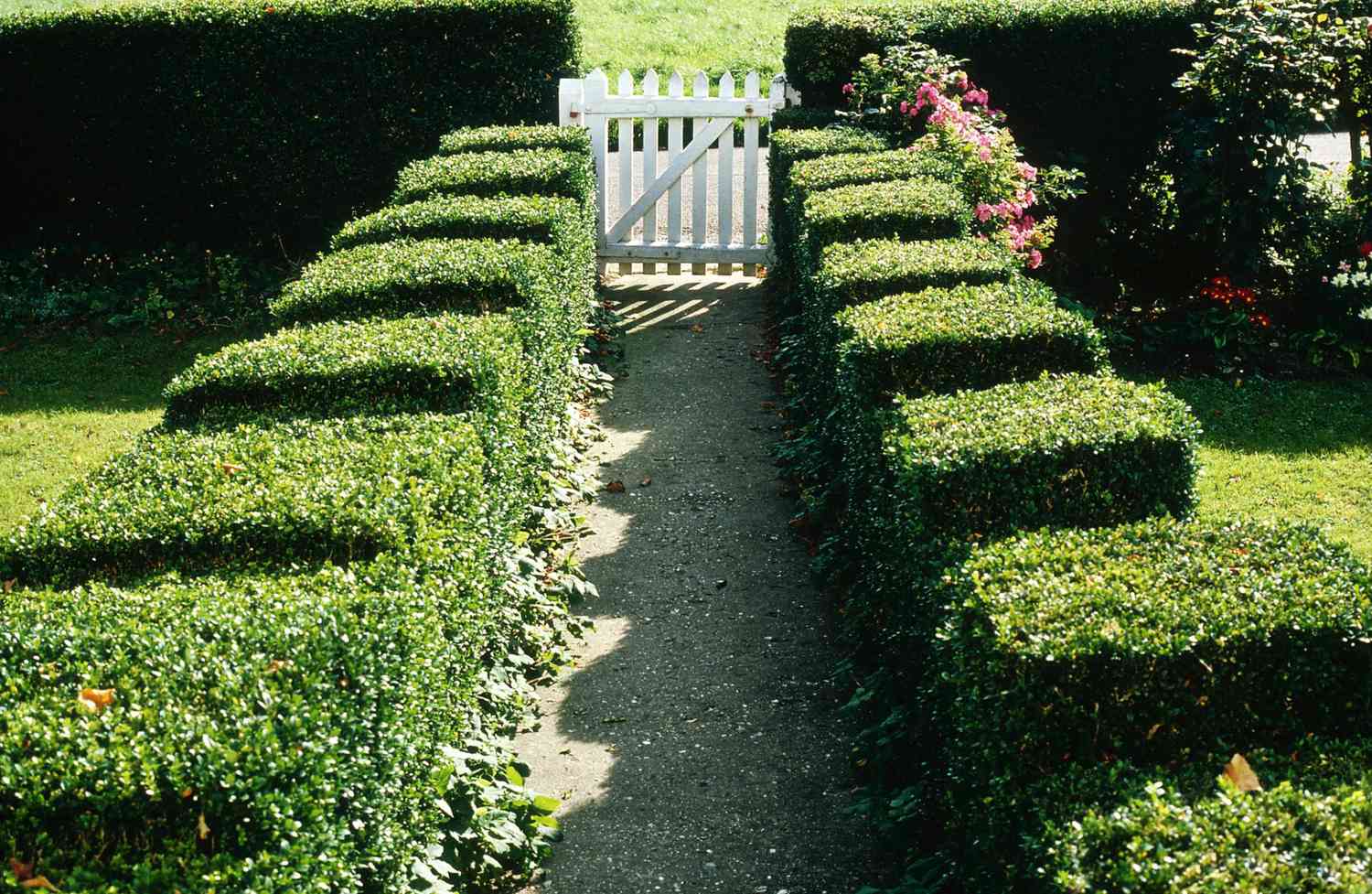
- Botanical Name: Buxus spp.
- Sun Exposure: Partial
- Soil Type: Well-drained loam or sand
- Soil pH: Acidic to neutral (5.5-7.2)
These versatile evergreen shrubs have small, dense leaves that can be carved into sculptural shapes or coaxed into sophisticated hedges. Boxwoods are also the key ingredient to making a classic formal garden with low parterres that create pathways and separate plant beds. These old-world, elegant beauties will thrive in many types of soil, but should be watered during long dry spells and prefer some protection from the afternoon sun. They can be grown in all but the Tropical South.
Inkberry Holly
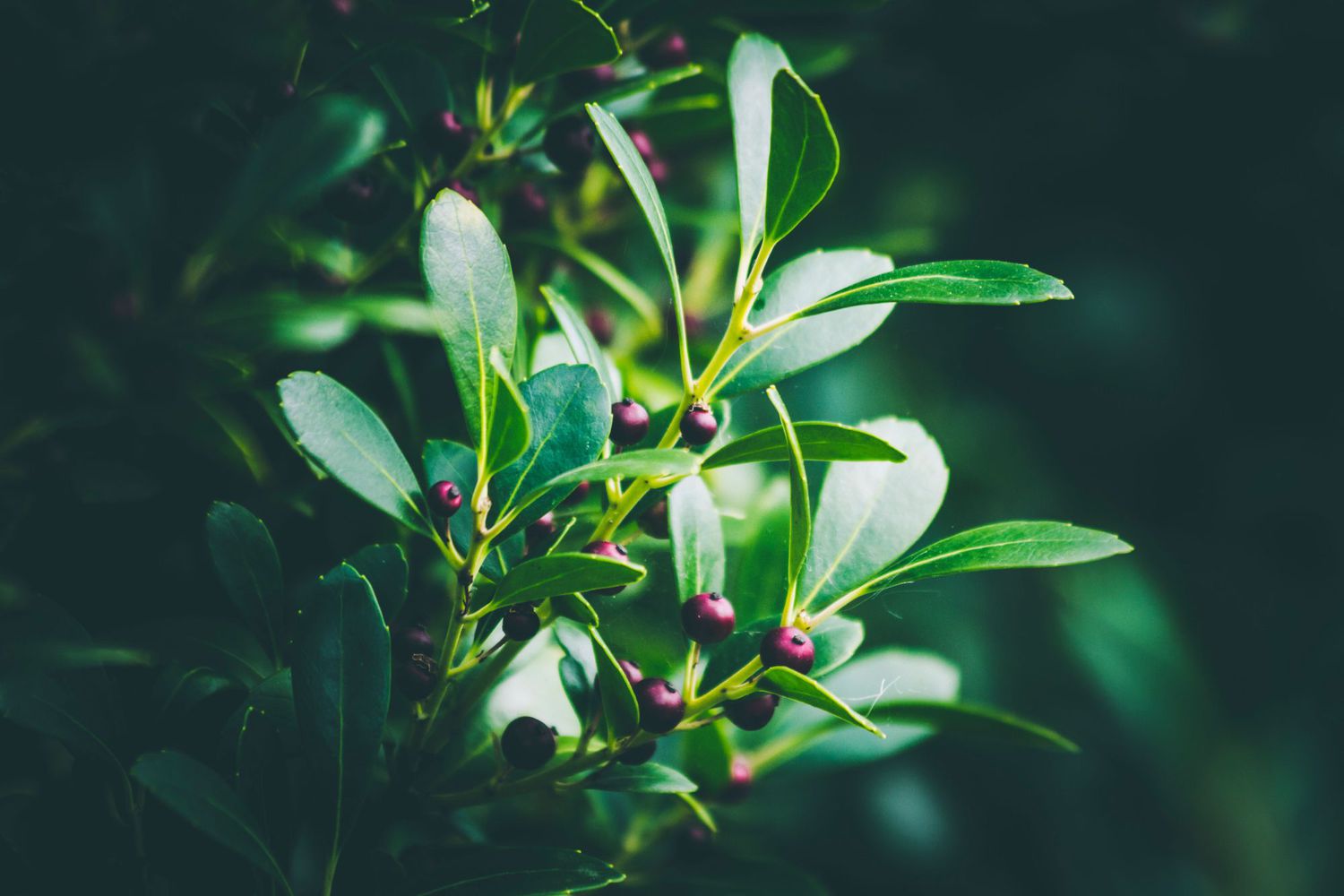
- Botanical Name: Ilex glabra
- Sun Exposure: Full, partial
- Soil Type: Moist, sandy
- Soil pH: Acidic (4.5-6.0)
This smooth-leafed cousin of the prickly Christmas-style holly has whitish-green flowers in spring before the dark berries that give the shrub its name appear in late summer and early fall. The richly colored evergreen shrub can grow up to 10 feet high, making it a good option for privacy. Inkberry holly grows wild in the coastal plain from Virginia to Texas, and can be grown anywhere in the South.
Mirror Bush
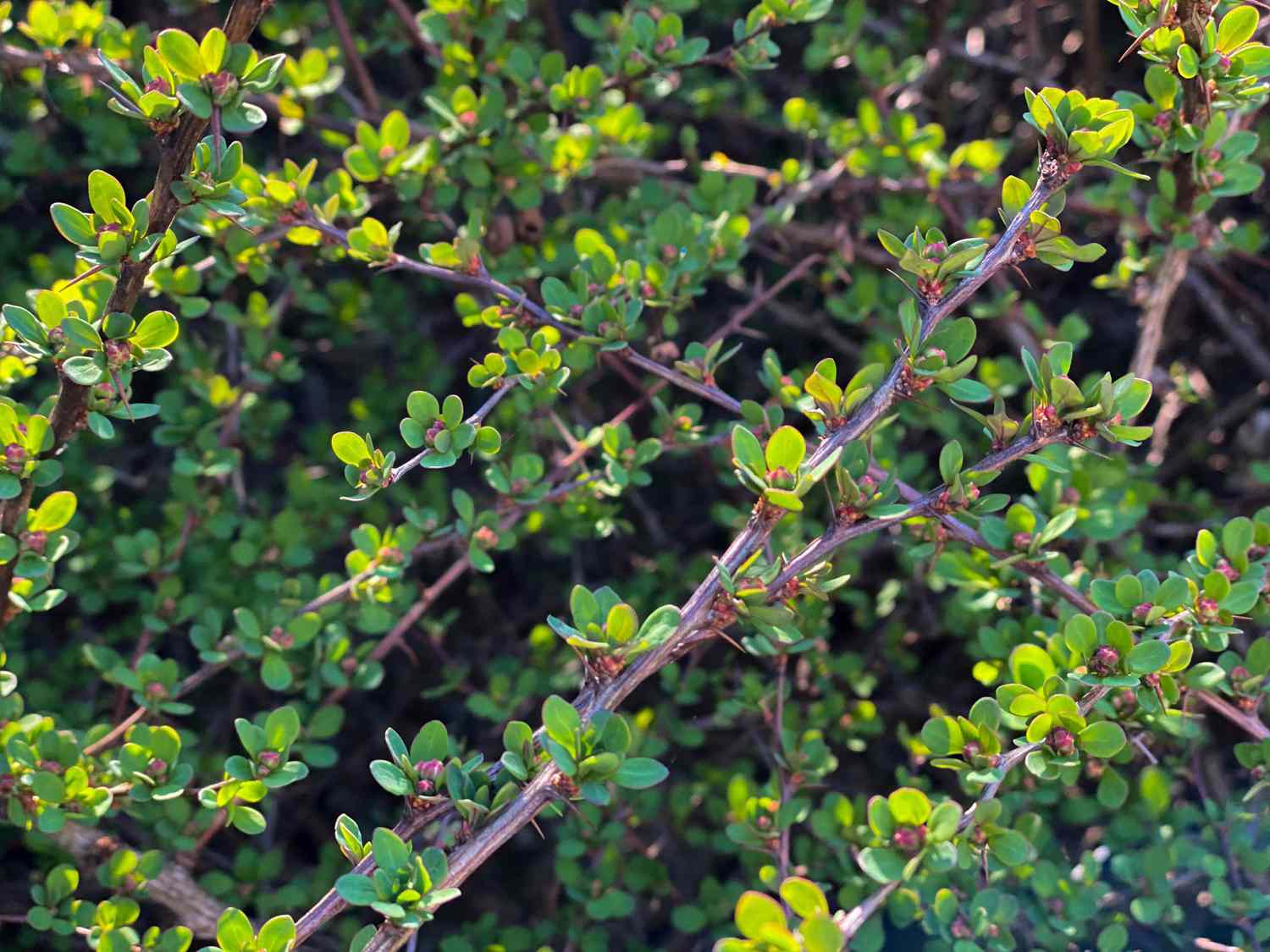
- Botanical Name: Coprosma repens
- Sun Exposure: Full, partial
- Soil Type: Well-drained
- Soil pH: Slightly acidic to neutral (6.0-7.0)
This New Zealand import, also known as Coprosma, can fill almost any spot in your garden as it can grow as a ground cover, a good-sized shrub, and in some cases reach tree height. Whatever your patch needs, the plant has green, rounded white, green, yellow, or reddish leaves that are glossy enough to explain the name. The leaves offer a pop of color all year, but the mirror bush also produces flowers and berries. This plant can be grown in any average garden soil that is well-drained. Coprosma doesn’t like cold winters and can’t be grown north of zone 9.
Mountain Laurel
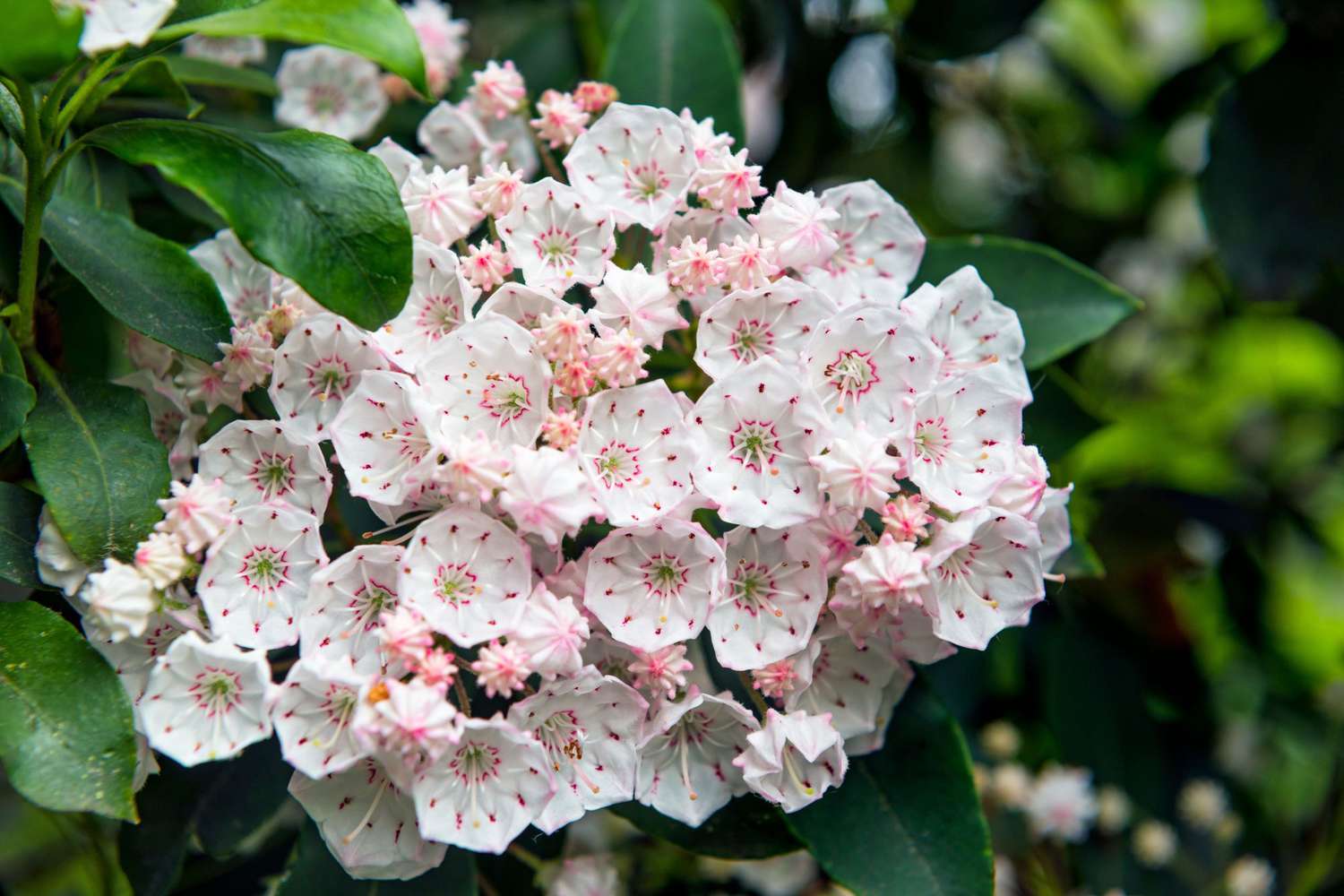
- Botanical Name: Kalmia latifolia
- Sun Exposure: Partial, dappled
- Soil Type: Well-drained but moist, organically rich, loamy or sandy
- Soil pH: Acidic (4.5-5.5)
These native shrubs offer the best of both worlds—attractive evergreen foliage and gorgeous pink or white blooms in late spring and summer. Mountain laurels can handle the coldest winter weather in style, but also can grow in the hot Coastal South if planted in a cool and shady spot. They often grow in thickets and can reach the size of a small tree, but there are more compact cultivars for the home garden.
Bottlebrush Tree

- Botanical Name: Melaleuca citrina
- Sun Exposure: Full
- Soil Type: Well-drained, sandy, loamy
- Soil pH: Acidic to neutral
This gorgeous shrub has beautiful red or crimson flowers that resemble a bottle brush and are a favorite of hummingbirds and butterflies. The leaves have a lemony scent when bruised. Its dense evergreen foliage can be used to create a year-round privacy hedge that is both effective and attractive. You can prune this drought-resistant plant as a small shrub or train it into a 25-foot tree, depending on how much space you have in the garden. Bottlebrush can be grown in USDA Plant Hardiness Zones 8b and warmer.
Arborvitae
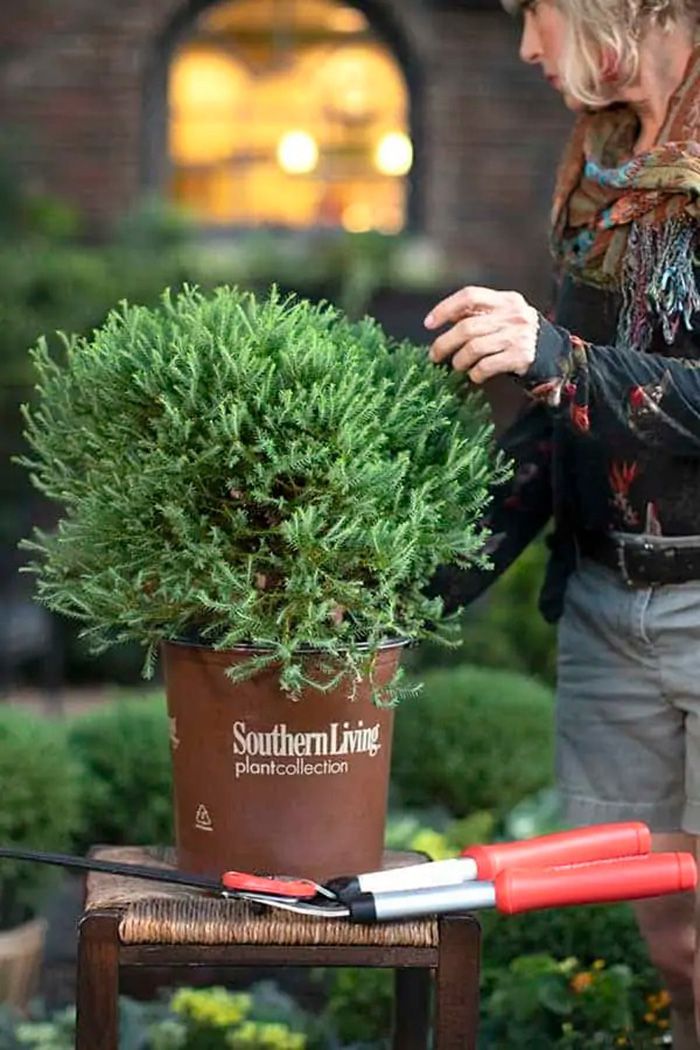
- Botanical Name: Thuja spp.
- Sun Exposure: Full, partial
- Soil Type: Well-drained but moist, loam, clay
- Soil pH: Slightly acidic to slightly alkaline (6.0-8.0)
When you think «arborvitae,» you likely picture a row of massive «Green Giants» towering at the edge of a driveway. While arborvitae does make an excellent privacy screen, there are smaller versions of this feathery evergreen available today. «Emerald Green» has the classic pyramid shape but slowly grows to 15 feet tall and 4 feet wide. The Southern Living Plant Collection offers small, mounded arborvitae like Pancake™ and the gold and orange-tinged Fire Chief™. Arborvitae prefers moist soil and a cooler climate, but does well in the Upper and Middle South. Some cultivars can be grown in zone 8 as well.
Camellia
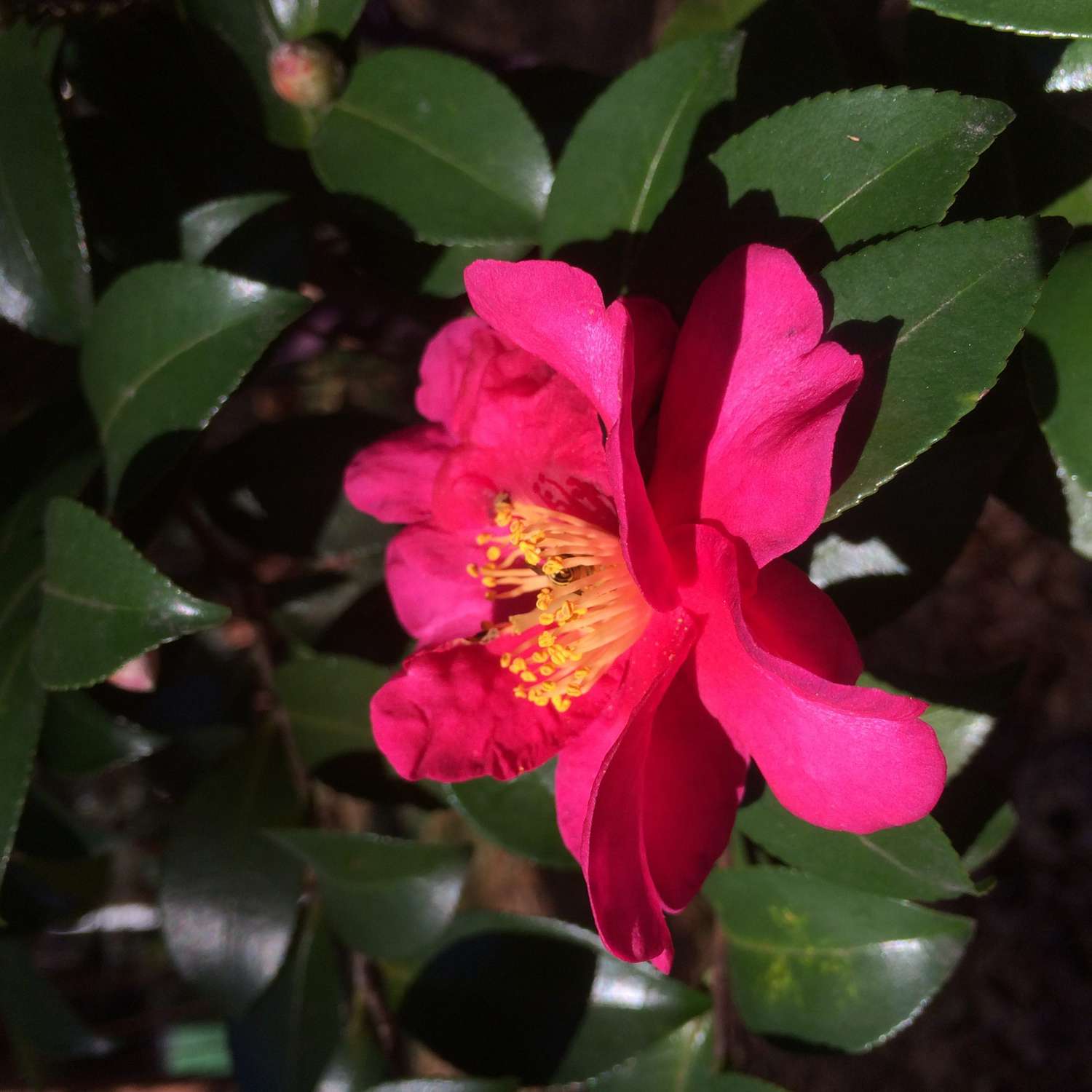
- Botanical Name: Camellia spp.
- Sun Exposure: Full, partial
- Soil Type: Well-drained clay, loam, or sand
- Soil pH: Acidic to neutral (5.5-7.0)
No Southern garden is complete without a camellia bursting into bloom while the rest of the plants are bedded down for winter. Whether you grow C. sasanqua, which blooms in late fall, or C. japonica, which blooms in late winter or early spring, those showy flowers will be most welcome in your garden. Sasanqua camellias are more tolerant of full sun and a wider range of soils, while the Japanese camellia prefers partial sun and rich, acidic soil. Both do best with protection from the hot afternoon sun. They can be shaped by pruning or left to grow to the size of a small tree. Plant in zones 7-9.
Azalea
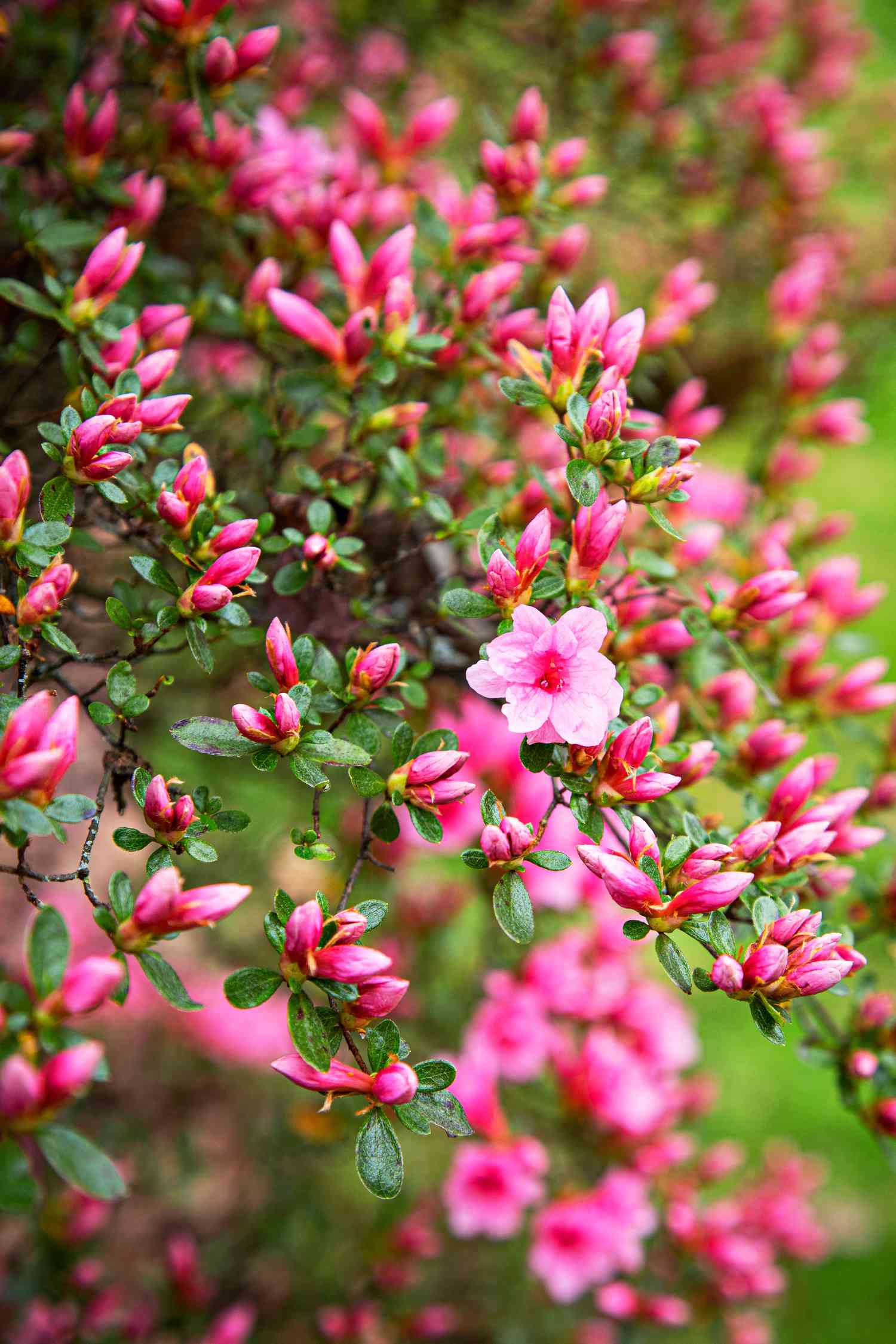
- Botanical Name: Rhododendron spp.
- Sun Exposure: Partial, dappled
- Soil Type: Well-drained but moist, organically rich, loamy, sandy
- Soil pH: Acidic (4.5-6.0)
When azaleas burst into flower, Southerners know spring has finally arrived. The most commonly grown azaleas are evergreen hybrids with pink or white trumpet-shaped flowers. Some can bloom in three seasons, like Encore azaleas. Plant your azaleas in acidic, well-drained, organically rich soil in partial or dappled shade. You’ll be rewarded each year when they are blanketed with flowers. Most azaleas can be grown in zones 6-8, but many new cultivars can be grown in zones 9 and 10 as well.
Cleyera
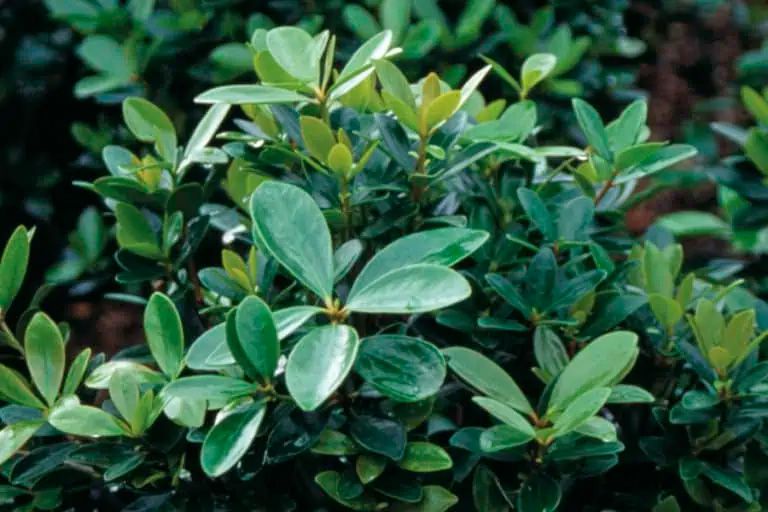
- Botanical Name: Cleyera japonica
- Sun Exposure: Full with afternoon shade, partial, dappled
- Soil Type: Well-drained, organically rich
- Soil pH: Acidic (4.5-6.5)
This broadleaf evergreen shrub exhibits the most color during the growing season, when new leaves are tinged with bronze. Two offerings from the Southern Living Plant Collection, Romeo® and Juliet®, have green and white variegated leaves. The waxy leaves make this mostly problem-free plant drought-tolerant, but cleyera appreciates protection from the afternoon sun. Many gardeners use it as a privacy screen or hedge that eventually grows to 10 or 15 feet. Romeo® and Juliet® are more compact and grow to 6 or 8 feet. Many cultivars can be grown anywhere in the South.
Indian Hawthorn
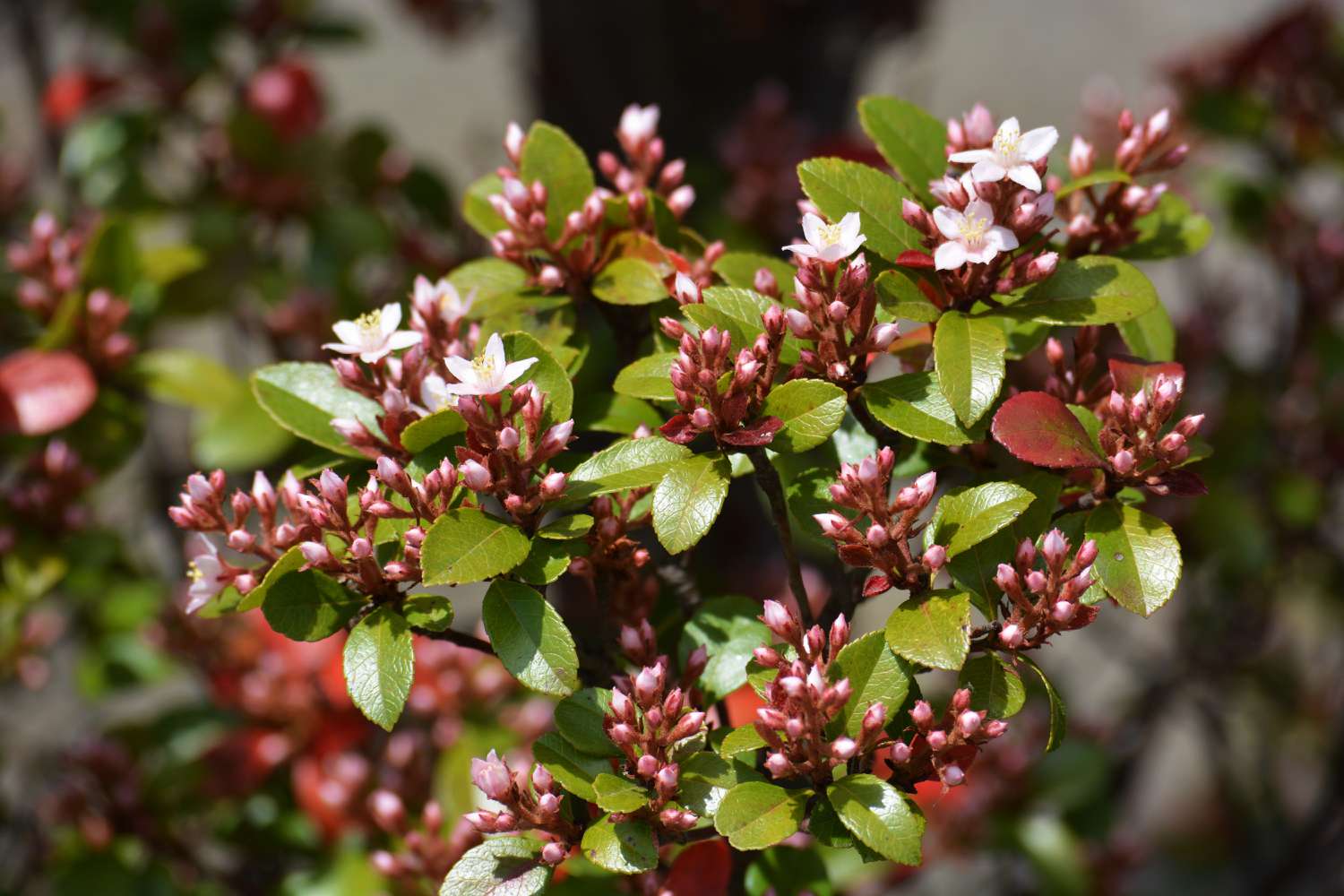
- Botanical Name: Rhaphiolepis indica
- Sun Exposure: Full
- Soil Type: Well-drained but moist
- Soil pH: Mildly acidic to mildly alkaline (6.0-7.5)
Indian hawthorn is a popular evergreen in coastal areas, as it doesn’t mind salty air or baking in the glaring sun. The dense foliage, pretty pinkish flowers, and dark blue berries make it popular as well. To keep Indian hawthorn healthy, plant it in full sun in well-drained soil and irrigate until the shrubs are established. This 4-6 foot shrub can be grown in zones 8-10.
Japanese Plum Yew

- Botanical Name: Cephalotaxus harringtonia
- Sun Exposure: Partial, dappled, deep shade
- Soil Type: Well-drained but moist
- Soil pH: Slightly acidic to slightly alkaline (6.0-7.5)
Japanese plum yew is a favorite in Southern gardens because it can handle heat and humidity with aplomb. Its deep green, soft needles take many forms, from arching vase-shaped shrubs to upright columns. Plum yew is also more tolerant of shade than most needled evergreens. It can be planted in full sun if your summers are cool, but generally does best in partial sun. Though it prefers even moisture, this shrub can handle dry soil and clay. Plum yew can be grown everywhere in the South except for frost-free climates.
Chinese Fringe Flower

- Botanical Name: Loropetalum chinense
- Sun Exposure: Full, partial
- Soil Type: Well-drained but moist, organically rich
- Soil pH: Acidic (4.0-6.5)
Chinese fringe flower is equally adored for its fluttery, early spring blooms and attractive foliage. The leaves are often in shades of plum or lime and can be variegated. These arching, multi-stemmed shrubs bloom best in full sun but may appreciate shade in the afternoon. Most cultivars grow to about 6 feet tall and wide. Plant fringe flower in acidic, well-drained soil with a good covering of mulch and it should thrive in any Southern garden in zones 7-9.
Aucuba
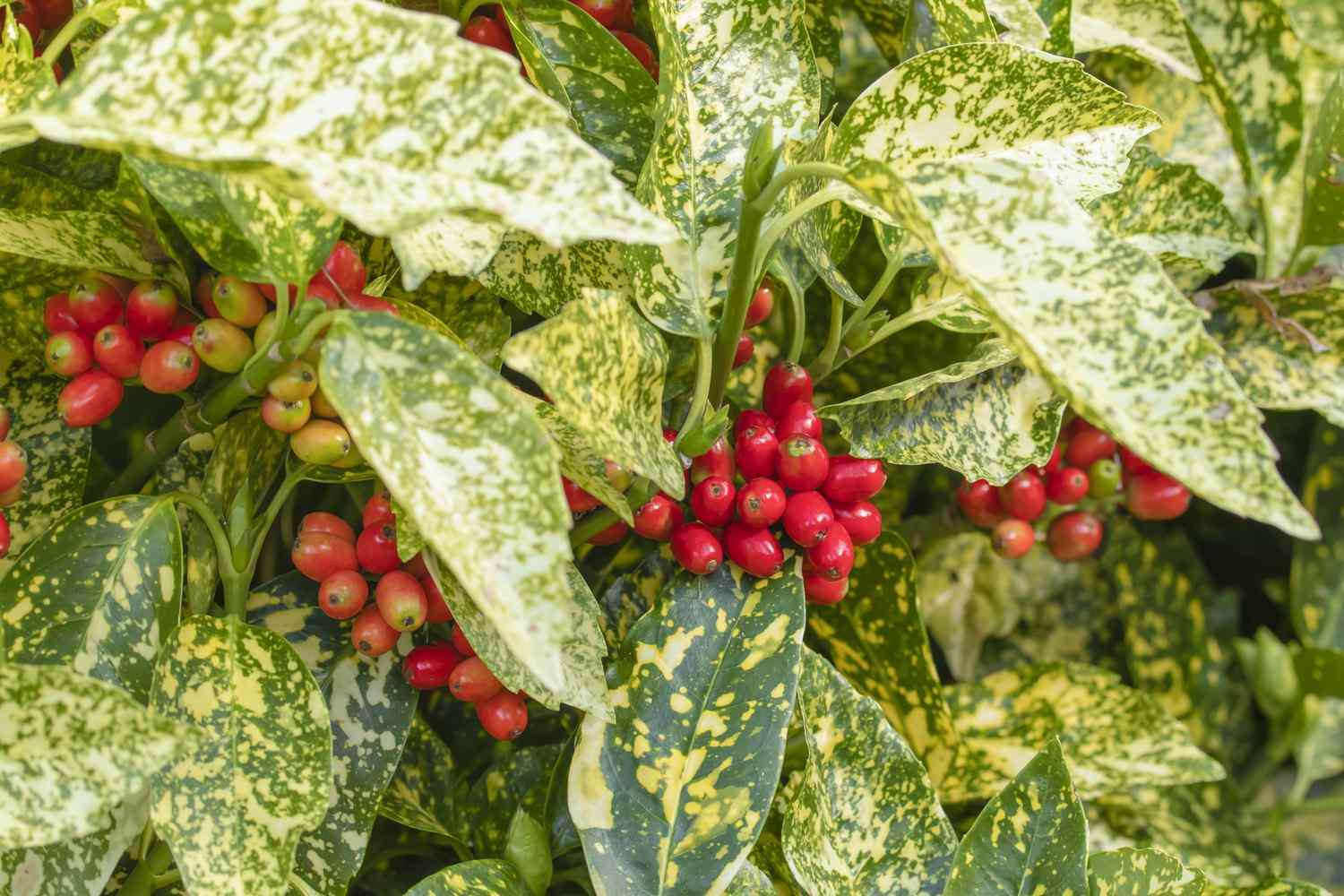
- Botanical Name: Aucuba japonica
- Sun Exposure: Partial, dappled, deep shade
- Soil Type: Well-drained but moist
- Soil pH: Acidic to mildly alkaline (4.5-8.0)
Tropical-looking Japanese aucuba can be a real life saver in the shade garden where other evergreens won’t grow. Gold-speckled cultivars light up dim areas, especially when female plants bear bright red berries in fall. This shrub likes to grow in moist, organically rich soil, but also tolerates poor sandy soils and occasional dryness just fine. Aucuba can grow to 10 feet tall; prune it back if you’d like to keep it shorter. This plant can be grown in all but the Upper South.
Cryptomeria
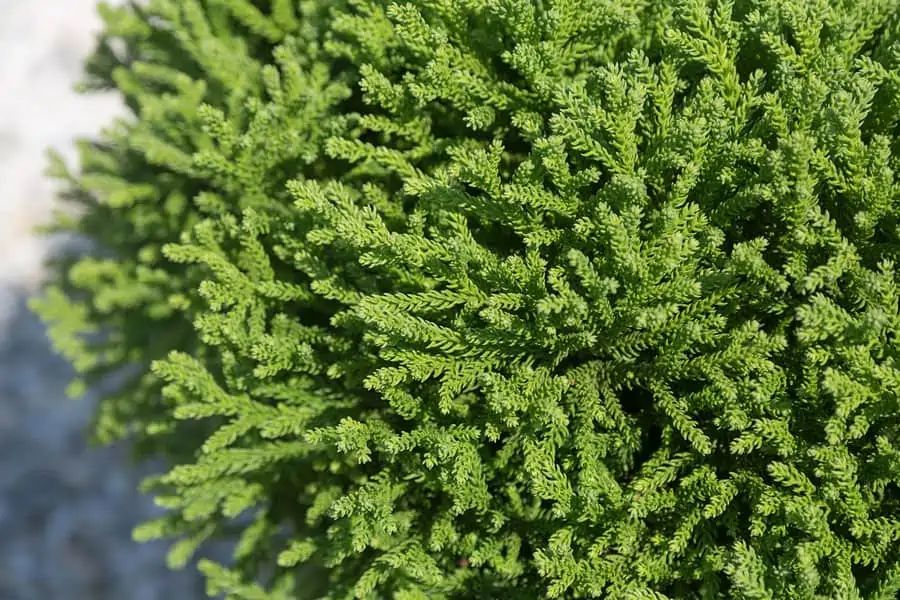
- Botanical Name: Cryptomeria japonica
- Sun Exposure: Full, partial
- Soil Type: Well-drained but moist, organically rich
- Soil pH: Acidic (4.0-6.0)
Japanese cedars have long made beautiful specimen trees in the South, and now gardeners can enjoy them in shrub form too. Some are globe-shaped, like Dragon Prince™ from the Southern Living Plant Collection. Others are flat-topped and squat. Though they are evergreen, some cultivars turn an attractive bronze or rust color in winter. Cryptomeria is adaptable to a wide range of conditions, but requires acidic soil and prefers full sun. It can be grown in all but the Tropical South.
Juniper
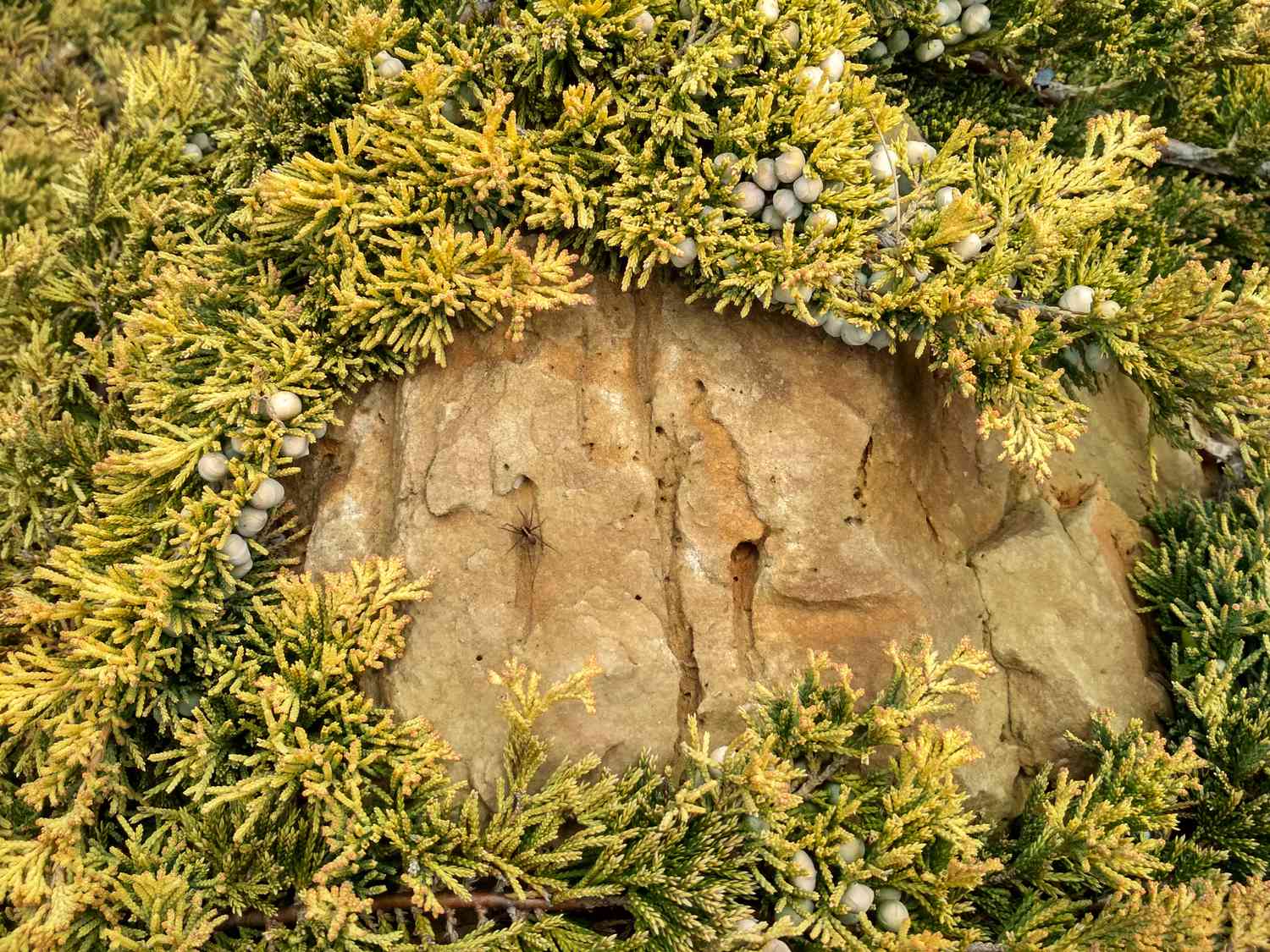
- Botanical Name: Juniperus spp.
- Sun Exposure: Full
- Soil Type: Well-drained, sandy, rocky
- Soil pH: Slightly acidic to slightly alkaline (5.0-8.0)
Our native creeping juniper (J. horizontalis) is a wonderful low-growing ground cover for rock walls and slopes that can survive in the toughest environments. Its relative, Chinese juniper (J. chinensis), prefers moderate moisture. Chinese juniper is often sold as a sprawling, vase-shaped shrub with golden or bluish, scale-like leaves. Of course there are trees as well, some of which grow to 30 feet. Experiment with them all and you can have a regular arboretum of varying sizes, shapes, and colors in your winter garden. These plants are grown everywhere but the Tropical South.
Japanese Pieris
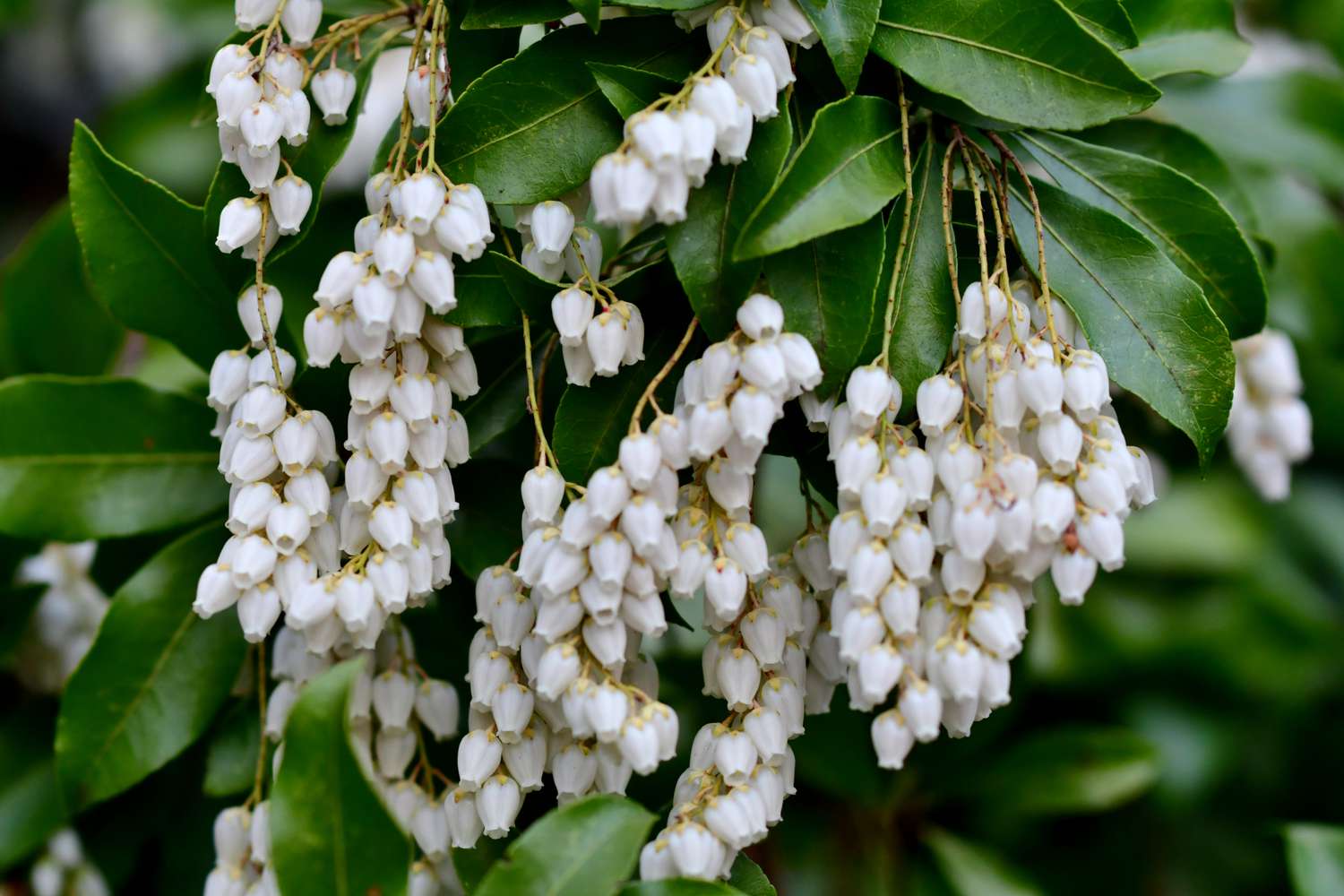
- Botanical Name: Pieris japonica
- Sun Exposure: Partial
- Soil Type: Well-drained but moist, organically rich
- Soil pH: Acidic (5.0-6.0)
Some Pieris species burn up in the hot South. Not so with Japanese Andromeda, which can be grown in zones 6-8. This shrub is known for the deep red color of its newly grown leaves and its fragrant, bell-shaped flowers. Plant it in rich, well-drained, acidic soil to keep it healthy. Grow in zones 5-8.
Distylium

- Botanical Name: Distylium spp.
- Sun Exposure: Full, partial
- Soil Type: Moist, sandy loam
- Soil pH: Acidic to neutral (5.0-7.0)
Drought and heat-tolerant, compact, disease-resistant—what more could you want in an evergreen shrub? Distylium can serve as an attractive border, backdrop, filler, or screen, making it an incredibly versatile plant. You’ll find versions that grow small or tall and reddish-bronze or blue-green. They can handle many types of soil, but thrive in a moist, sandy loam. Many require little pruning, though tip pruning makes them nice and bushy. Grow in zones 7-9.
Wax Myrtle

- Botanical Name: Myrica cerifera
- Sun Exposure: Full, partial, dappled
- Soil Type: Moist, sandy
- Soil pH: Acidic (3.7-6.5)
This familiar native plant grows in wet areas throughout the Southeast and west into Texas. While it often develops into tree form in the wild, Southern wax myrtle can be sheared into a dense hedge in Southern gardens. Also known as bayberry for its spicy scented berries, wax myrtle does very well in waterlogged soils, sun or shade, and when exposed to salt spray. It can be grown in zones 7-11.
Yaupon Holly
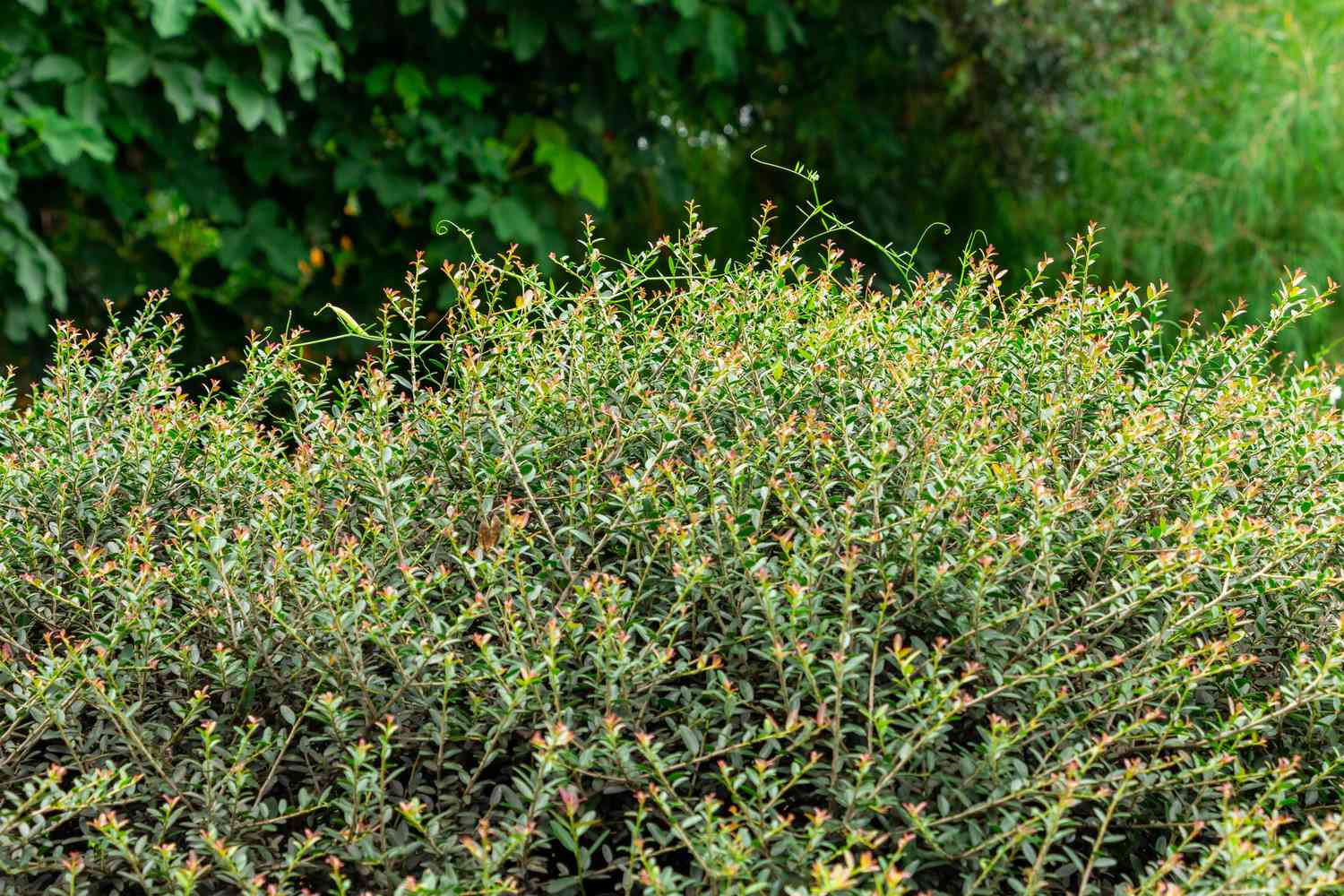
- Botanical Name: Ilex vomitoria
- Sun Exposure: Full, partial
- Soil Type: Well-drained but moist
- Soil pH: Acidic (3.7-6.8)
Here’s another native tree or shrub that grows in coastal woodlands. Yaupon holly is found from southern Virginia to central Texas. The small, oval, densely packed leaves can be clipped into just about any shape you desire. Female plants bear bright red berries in fall and winter, but a male must be growing in the area for successful pollination. There are several compact cultivars of Yaupon holly with a mounded form that grow 3-5 feet tall. This salt-tolerant plant can adapt to many soil conditions including dry soil, but should be watered regularly until established.